Quick Tip Wednesday: How to Set Up a Gratitude Month
Welcome back to Quick Tip Wednesday!
6 min read
Julia Francis : Feb 10, 2022 11:00:00 AM

In the end we retain from our studies only that which we practically apply. ~ Johann Wolfgang Von Goethe
Every school district has a teacher professional development program, but not all programs are created equal. In some districts, teachers may be disengaged and administrators may be frustrated, wondering why they’re not getting the results they want.
At Alludo, we specialize in creating online learning environments that use a learner-centered ideology. We believe that when teachers are encouraged to provide input and feedback about professional learning, they are most likely to feel valued. The result is higher teacher retention and better student outcomes.
With that in mind, here are some pointers about how to use the learner-centered ideology in your district’s professional development program.
Let’s start by reviewing the hallmarks of effective professional development for teachers. We believe there are four key elements that must be in place if district and school leaders want to see high teacher engagement and optimal student outcomes.
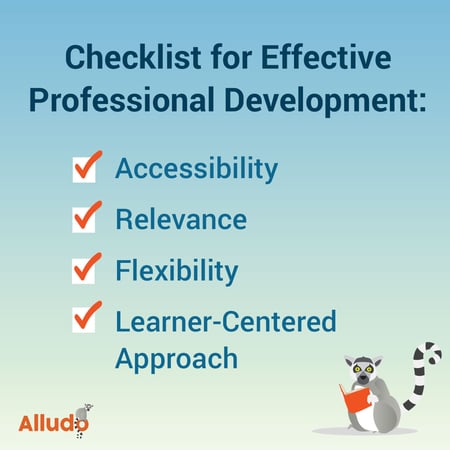
First, professional development opportunities must be accessible to teachers. It is unreasonable to expect teachers to turn their lives upside down to attend professional development.
Effective PD must value teachers’ time and energy with easy access, which is one of the reasons we believe that online courses through asynchronous learning is the best solution for effective professional development.
Teachers are most likely to engage with professional development when they know it is directly relevant to their time in the classroom. Every teacher prioritizes student outcomes and it’s incumbent on school districts to provide courses and topics that teachers can use.
You can increase the relevance of PD by understanding what teachers need and how they will use what they learn.
Flexibility is the third hallmark of effective professional development. It’s important to remember that each teacher is unique, and each has challenges in and out of the classroom that can benefit from professional development.
Here again, online learning offers one aspect of flexibility because teachers can complete courses at their convenience. Flexibility also appears in the availability of choice, allowing teachers to select PD courses that are useful to them.
The learner-centered approach is essential to effective professional development. When school districts give teachers a choice and a voice in what they learn, teachers are more likely to be engaged and less likely to burn out.
True learner-centered PD incorporates everything we have talked about above, including accessibility, relevance, and flexibility.
Learner-centered ideology, as its name suggests, puts teachers-as-students squarely at its center. While school districts and states can and do impose professional development requirements on teachers, adopting learner-centered instruction is the best way we know to maximize teacher engagement and improve student outcomes.
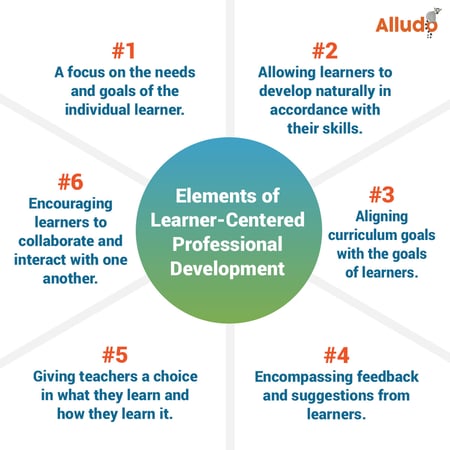
Here are six hallmarks of learner-centered ideology:
School districts that embrace the learner-centered approach to PD education see dramatic improvements in teacher engagement and ultimately, in student outcomes.
Creating a learner-centered professional development program for your school district isn’t difficult, but it does require some assistance. Here are our tips for putting learners at the heart of your PD program.
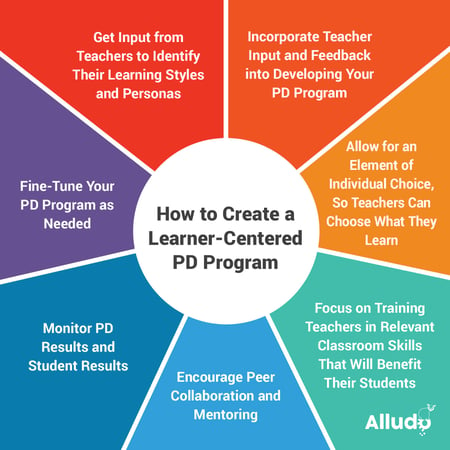
The first step is to talk to the teachers in your district and learn what they need to improve their teaching. One way to do that is by gathering information about different learning styles and using them to create learner personas.
A 2019 article in Life Sciences Education looked at how school districts and universities might use persona methodology to improve teacher professional development. They developed four personas for teachers that encompassed a wide array of learning styles and preferences.
The suggestion in the article was for administrators to use the personas to address the specific needs of teachers, encouraging them to use their strengths while addressing their weaknesses.
One of the key components of learner-centered curriculum is teacher choice. It’s essential to give teachers a say in what they learn because teachers are in the best position to know what’s needed to improve student outcomes.
The Alludo approach involves building flexibility and responsiveness into professional development. The benefit of incorporating agility into PD is that it allows administrators to pivot to respond to new needs as they arise. We provide a huge array of courses that can be tailored to the specific needs of your district’s teachers.
We’ve already talked about teacher choice but it’s an important topic that bears repeating. No two teachers are alike. A teacher who is a subject matter expert may not need additional instruction in the subject they teach, but may need help with social/emotional learning and other topics.
When you allow teachers a choice in what they learn, they are most likely to be highly engaged and motivated. They’ll be able to choose topics and modules that appeal to them, including subjects that they know they can put to work in the classroom to the benefit of their students.
Good teachers want their students to have the best possible outcomes. As we mentioned above, it stands to reason that teachers want to learn skills that are directly relevant to their time in the classroom.
By collecting data from teachers about what they want, you can align your district goals with what teachers need, providing them with the type of in-depth instruction that will inform their performance in the classroom.
One of the problems with thinking of professional development for teachers with a “top down” mentality is that it discourages teachers from discussing PD with one another and sharing their insights and experiences.
School districts who want to adopt a learner-centered ideology should encourage teachers to interact and collaborate with one another. They can do so by providing the time and space for teachers to collaborate and by encouraging peer mentoring.
Professional development may be ineffective if you don’t measure teacher participation, teacher results, and student results.
With Alludo, school districts can track a variety of metrics to measure teachers engagement, the hours spent on PD, and missions completed. They can then review their own tracking of student results to determine how PD has improved outcomes for students.
Finally, any school district adopting the learner-centered ideology should take the metrics they gather and use them to fine-tune their program as needed. Student and teacher needs are constantly evolving.
The COVID-19 pandemic is a perfect example of why agility and flexibility are required. Almost overnight, school districts had to adapt to remote learning. That meant training teachers to use Zoom, making sure students had access to the necessary technology, and giving teachers new tools to engage their students.
The Alludo approach to professional development is always focused on the needs of teachers and students. We specialize in creating programs that emphasize teacher choice, provide tailored instruction, and maximize teachers’ time in the classroom. We've also included topics on learner voice and choice in the Alludo content catalog, so teachers can be empowered to provide their own students with personalized learning opportunities.
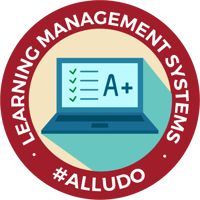 |
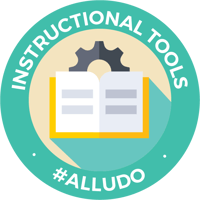 |
 |
A case in point is the professional learning environment we created for the Val Verde Unified School District. With input from teachers and administrators, we created Val Verde Trek, a personalized professional development system that allowed the school district to offer teachers thousands of choices for online learning that were fulfilling while also allowing the school district to progress technology and professional development goals.
Adopting the learner-centered ideology can help your school district provide teachers with professional development that’s exciting, engaging, and directly relevant to their time in the classroom.
Want to reach up to 100% PD in your district? See how Alludo can help make it happen with our free professional development platform trial, including:
.png)
Welcome back to Quick Tip Wednesday!

Mid-Year Reflection: Your Secret to a Stronger Second Semester
A great way to get your learners engaged in your Alludo program is by keeping the content in your program up-to-date and relevant. Rebecca has...